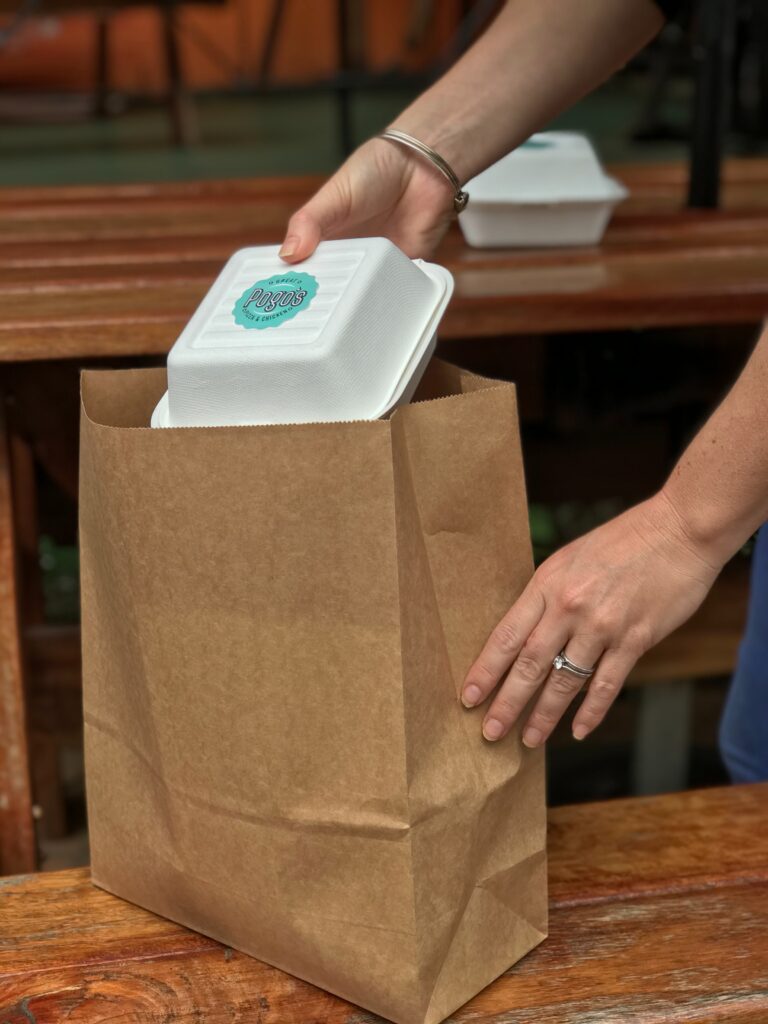Packing Lunches For Work And School
It’s essential to eat all meals; they provide energy and nutrients. So, you can be your best at work or school.
Deciding whether you should eat homemade or restaurant-bought meals is sometimes a question. The answer is that homemade meals are usually better for you than the meals you buy from fast food and other restaurants. Packing lunches for work and school will save you money and give you a better meal.
Restaurant meals are more expensive and frequently serve you less healthy food than you have at home. They are also known for serving too much food, which is unhealthy and wasteful.
Fixing meals at home to eat at work or school is an example of how to save money. Usually, you spend much more money on bought and prepared meals than if you prepared them yourself at home. This is a good start if you are saving money as a single mom. Not only do you save money, but you minimize food waste.
Spoiler alert: if you are trying to save even more money, read my article =low cost and free recreation activities for kids=.
Packing Lunches For Work And School
Pack only a little food. We all know how Thanksgiving is. You overeat, then you want to take a nap. But you need to eat enough to give you the energy to function.
Watch the sugar for peaks and crashes. Be mindful of what you are putting into your lunch. Did you know a Coke Original has enough sugar for an entire day? You get too much sugar if you drink more than one Coke Original daily.
Stay hydrated; drinking water is always your best choice.
Packing lunches for work and school does some planning and some time, but it’s well worth it. You eat better and cheaper than buying prepared meals.
25 ideas for lunches for school and work
- Classic sandwich with your choice of fillings
- Salad in a mason jar (layer dressing, veggies, and protein)
- Veggie wrap with hummus or cream cheese spread
- Pasta salad with vegetables and vinaigrette dressing
- Quinoa or grain bowl with roasted veggies and protein
- Chicken or tuna salad with whole grain crackers or lettuce wraps
- Sushi rolls or sushi bowl with brown rice
- Homemade pizza or mini pizza bites
- Bean or lentil soup with a side of whole-grain bread
- Vegetable stir-fry with tofu or chicken
- Stuffed bell peppers with rice and ground turkey or beans
- Baked falafel with whole wheat pita bread and tzatziki sauce
- Caprese salad with mozzarella, tomatoes, and basil
- Cold noodle salad with sesame dressing and shredded chicken
- Bento box with a variety of bite-sized snacks like fruit, cheese, and nuts
- Mini quiches or frittatas with spinach, mushrooms, and cheese
- Greek or Mediterranean-style wrap with cucumber, tomato, feta, and olives
- Chicken or vegetable skewers with a side of couscous or quinoa
- Stuffed whole wheat tortillas with black beans, rice, and salsa
- Lentil or chickpea curry with brown rice
- Veggie-packed omelette or frittata
- Sliced roast beef or turkey with whole grain bread or wraps
- Asian-style lettuce wraps with ground chicken or tofu
- Homemade sushi rolls with avocado, cucumber, and crab sticks
- Baked sweet potato with black bean and corn salsa
What To Pack When You Have Nothing
If you don’t have anything specific to pack for your lunch, don’t worry! You can still create a simple and satisfying meal with a few basic ingredients. Here are some ideas for a packed lunch when you don’t have much on hand:
Sandwich or Wrap:
Bread, tortillas, or lettuce leaves (for a low-carb option)
Deli meats (e.g., turkey, ham, chicken), cheese, or spreads (mayonnaise, mustard, hummus)
Fresh vegetables (e.g., lettuce, tomato, cucumber)
Optional extras: pickles, olives, or sliced avocado
Salad:
Leafy greens (e.g., lettuce, spinach, arugula)
Protein options (e.g., canned tuna, grilled chicken, hard-boiled eggs, chickpeas)
Chopped vegetables (e.g., carrots, bell peppers, cherry tomatoes, broccoli)
Dressing: olive oil and vinegar, lemon juice, or store-bought dressings
Pasta or Grain Bowl:
Cooked pasta, rice, quinoa, or couscous (can be made ahead of time)
Protein source (e.g., canned beans, grilled tofu, leftover chicken)
Vegetables (e.g., steamed or roasted vegetables, cherry tomatoes)
Flavor additions: herbs, spices, or a splash of soy sauce or lemon juice
Snack Plate:
Assorted raw veggies (e.g., carrot sticks, cucumber slices, cherry tomatoes)
Sliced cheese or cottage cheese
Whole-grain crackers or rice cakes
Nuts or seeds (e.g., almonds, walnuts, sunflower seeds)
Fresh fruit or dried fruit (e.g., apple slices, grapes, raisins)
Leftovers:
If you have any leftovers from previous meals, pack them in a microwave-safe container for an easy lunch option.
Remember to include bottled water or your preferred beverage to stay hydrated throughout the day. These suggestions can be adapted based on your dietary preferences and what ingredients you have available.
Conclusion
Packing lunches for work and school is an easy way to eat better and cheaper.

